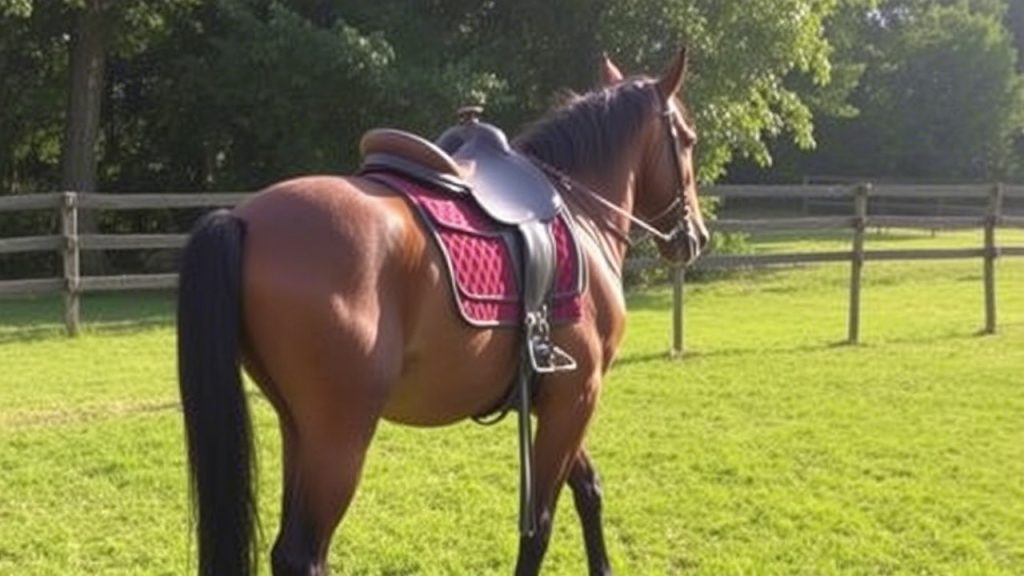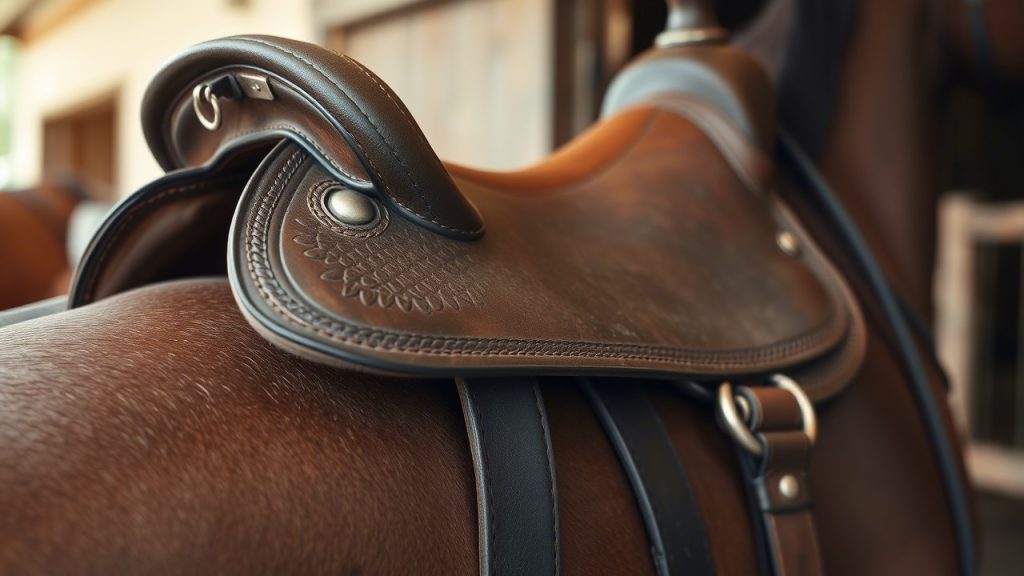6 Best Saddles for Light and Balanced Contact – A Complete Review
Achieving light and balanced contact with your horse is a fundamental goal in all riding disciplines. It’s the foundation of effective communication and harmony between rider and horse. Whether you’re a dressage enthusiast, an eventer, or a pleasure rider, having the right saddle can make all the difference in achieving that elusive lightness and balance in your riding.
We’ll explore the 6 best saddles for light and balanced contact, explaining why each saddle excels, how saddle design influences contact, and practical tips for choosing the right saddle for your needs. We’ll also cover frequently asked questions about saddle fit, contact, and rider balance.
Why Light and Balanced Contact Matters
Before diving into the saddles, let’s briefly explore why light and balanced contact is crucial:
- Improved Communication: A light hand and balanced seat allow your horse to move freely and respond clearly to your aids.
- Horse Comfort: Balanced contact reduces tension and discomfort in the horse’s back and neck.
- Rider Stability: A balanced rider is less likely to disrupt the horse’s rhythm and balance.
- Enhanced Performance: Whether schooling dressage movements or jumping fences, light contact helps refine precision and fluidity.
Achieving this harmony requires not just skill but also the right equipment — starting with your saddle.
What Features Make a Saddle Ideal for Light and Balanced Contact?
To understand why the following saddles are top picks, here are some essential features that contribute to light and balanced contact:
- Close Contact Design: Enables you to feel your horse’s movements clearly.
- Balanced Seat: Helps position the rider evenly and securely without tipping forward or back.
- Minimal Bulk: Saddles that don’t over-pamper but allow flexibility promote better seat and leg position.
- Knee and Thigh Blocks: Provide gentle support to keep the rider’s leg stable but don’t restrict movement.
- Proper Fit for Horse and Rider: An ill-fitting saddle can create tension and resistance, preventing light contact.
- Flexible Tree: Some saddles have flexible trees that adapt slightly to the horse’s back, encouraging freedom of movement.
- High-Quality Leather or Synthetic Materials: These influence grip and feel, important for subtle cues.
- CWD SE02 Jump Saddle
Overview
The CWD SE02 is a top-tier saddle designed to maximize rider contact and balance. Known for its ergonomic design, it is favored by professionals who require precision and lightness in their riding.
Features
- Lightweight yet sturdy construction
- Deep seat providing security without restricting movement
- Soft knee and thigh blocks for support
- Close contact design for maximum feel
- Multiple flap sizes to suit rider preferences
Why It’s Great for Light and Balanced Contact
The SE02’s design puts the rider in the perfect position to maintain a light, elastic contact with the horse’s mouth. Its close contact build means there’s less material between rider and horse, allowing for sensitive communication. The deep yet open seat encourages balance without rigidity.
Who Should Consider It?
Advanced riders who want a saddle that promotes subtlety and connection without sacrificing support.
- Passier GG Dressage Saddle
Overview
Passier saddles have long been synonymous with quality and tradition. The GG dressage model is engineered for riders who demand a refined seat and excellent balance for light contact.
Features
- Deep, contoured seat with narrow twist
- Forward-cut flap for long leg position
- Firm knee rolls for subtle leg aids
- Adjustable tree for customized fit
- Premium leather with excellent grip
Why It’s Great for Light and Balanced Contact
This saddle allows riders to sit deep and still maintain flexibility in their hip joint. The close contact and secure leg position support an independent seat, essential for light contact. The adjustable tree enhances fit, helping the horse move freely.
Who Should Consider It?
Dressage riders looking for a traditional yet highly functional saddle that promotes harmony and subtlety.

- Wintec Pro Endurance Saddle
Overview
The Wintec Pro Endurance saddle is designed with lightweight synthetic materials and a flexible fit system. It’s ideal for riders needing comfort, balance, and a close feel, especially over long rides.
Features
- Easy-care synthetic leather
- Deep seat with moderate padding for comfort
- Adjustable gullet system to fit a variety of horses
- Knee rolls that provide stability without bulk
- Lightweight and durable
Why It’s Great for Light and Balanced Contact
Its lightweight and balanced design make it easier for riders to stay centered and maintain a soft rein contact over extended periods. The synthetic materials offer good grip without stiffness, aiding subtle communication.
Who Should Consider It?
Riders seeking a budget-friendly, low-maintenance saddle that still provides excellent contact and balance.
- Antares Dressage Saddle
Overview
Antares is well-known for combining craftsmanship with modern technology to produce saddles that enhance rider-horse connection. The Antares dressage saddle is designed for precision and balance.
Features
- Deep seat with narrow twist for leg contact
- Customizable panels and tree for optimal fit
- Soft knee and thigh blocks for leg security
- High-quality calfskin leather offering excellent grip
- Ergonomic seat design for rider comfort
Why It’s Great for Light and Balanced Contact
The narrow twist and deep seat facilitate a stable yet supple seat position, which is essential for light contact. Its customization options ensure a perfect fit, helping the horse to move freely and naturally.
Who Should Consider It?
Serious dressage riders who want a premium saddle tailored for subtle communication and balance.
- Pessoa Legacy Close Contact Saddle
Overview
The Pessoa Legacy close contact saddle is built for riders who want a balance between security and flexibility. It suits jumping, eventing, and general purpose riding.
Features
- Close contact leather design for maximum feel
- Deep seat for added stability
- Knee and thigh blocks to assist leg position
- Balanced flap design to promote correct leg alignment
- Durable leather with excellent grip
Why It’s Great for Light and Balanced Contact
It offers a solid, secure seat without sacrificing the ability to move freely with the horse. This balance is perfect for maintaining light contact in varied riding scenarios.
Who Should Consider It?
Versatile riders who participate in jumping or eventing and want a saddle that supports balanced, light contact.
- Devoucoux Makila Dressage Saddle
Overview
The Devoucoux Makila is a favorite among dressage riders who prize elegance, comfort, and connection. It offers a unique blend of innovation and tradition.
Features
- Deep, padded seat with excellent support
- Adjustable tree and panel system for perfect fit
- Knee and thigh blocks designed for subtle support
- Soft leather with high grip
- Lightweight and durable construction
Why It’s Great for Light and Balanced Contact
This saddle promotes a deep, centered seat that encourages a light rein contact. Its adjustable fit system helps the horse stay relaxed, enabling better communication.
Who Should Consider It?
Dressage riders who want a luxurious, highly functional saddle that supports refined riding.
How to Choose the Right Saddle for Light and Balanced Contact
- Prioritize Fit: Both for rider and horse. Poor fit causes discomfort and tension, disrupting contact.
- Consider Your Riding Style: Jumping saddles may differ from dressage saddles in design and balance.
- Look for Close Contact: Saddles that bring you closer to your horse’s movement improve communication.
- Test Multiple Saddles: Try before buying to feel which saddle supports your seat and leg best.
- Work with a Professional: Saddle fitters can help find or customize saddles to your specific needs.
Tips for Maintaining Light and Balanced Contact
- Develop Core Strength: Helps keep you centered and balanced.
- Practice Soft Hands: Avoid gripping reins too tightly.
- Improve Seat Independence: Work on exercises that increase your ability to move with the horse.
- Use Groundwork: Improve communication and trust with your horse off the saddle.
- Regular Saddle Checks: Ensure your saddle remains in good condition and fits well as your horse changes.
Frequently Asked Questions
- What does “light contact” mean in riding?
Light contact refers to a soft, elastic connection between the rider’s hands and the horse’s mouth, allowing the horse freedom while maintaining communication.
- How does saddle design affect rider contact?
Saddle design affects how close and balanced the rider can sit, which directly influences the subtlety and quality of contact.
- Can I use a jumping saddle for dressage to get light contact?
While possible, jumping saddles are generally designed differently. Dressage saddles usually promote a deeper seat and longer leg position, better for light contact in dressage.
- How do knee blocks assist with balance and contact?
Knee blocks help keep the rider’s leg in place, improving stability and allowing better seat control, which supports lighter contact.
- Are synthetic saddles good for contact?
Modern synthetic saddles can offer good grip and comfort, making them a viable option for riders seeking light contact, especially beginners or those on a budget.
- How often should I have my saddle fitted?
Ideally, every 6 to 12 months, especially if your horse changes shape due to training, weight, or age.
- Can saddle fit problems cause tension in the horse?
Yes. A poor-fitting saddle can cause discomfort and tension, making it harder for the horse to respond softly to contact.
- What role does rider fitness play in balanced contact?
A strong, flexible rider is better able to maintain balance and use subtle aids, which is essential for light contact.
- How do I know if my saddle is helping with contact?
If you feel secure, balanced, and able to maintain soft rein aids while your horse moves freely and willingly, your saddle is supporting good contact.
Conclusion
Choosing the right saddle is essential to achieving light and balanced contact with your horse. The 6 best saddles for light and balanced contact reviewed here offer a range of options for riders of different disciplines and budgets, all designed to improve rider position, comfort, and subtle communication.
Remember, the best saddle supports both you and your horse comfortably and allows you to develop a partnership based on trust and responsiveness. Combine the right saddle with good riding technique, and you’ll be on the path to more harmonious, balanced riding.
If you want help finding the perfect saddle or advice on saddle fit, feel free to reach out!





